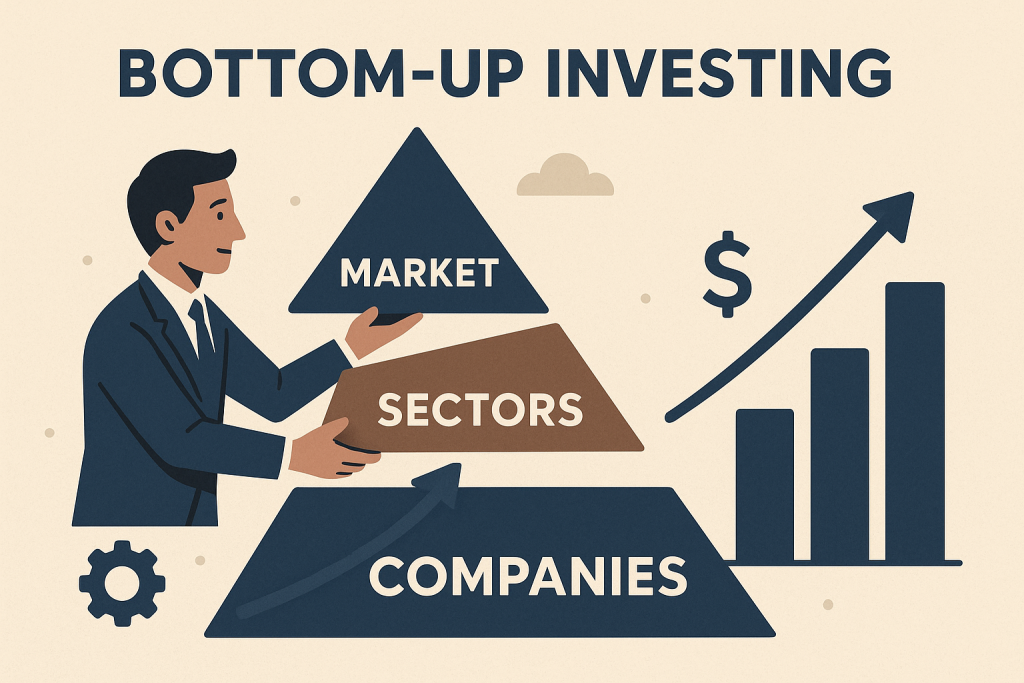In the last post, we covered the top-down strategy (economy → industry → company).
Now let’s flip it around and talk about the bottom-up strategy, which takes the opposite approach.
🧠 Definition: Bottom-Up Investing
“Bottom-up investing means starting with individual companies first, then looking at industries and the broader economy.”
Instead of focusing on the forest first, you start with the tree.
If a company has strong earnings, low debt, and a competitive edge, bottom-up investors believe it’s worth buying—even if the economy looks uncertain.
👀 Key Idea Behind Bottom-Up
The mindset is simple:
“No matter what the market is doing, if this company is fundamentally strong, it’s a worthy investment.”
👉 For example:
- Strong and consistent earnings
- Reliable dividends
- Solid financial health
- Loyal customers and growth potential
🔍 Steps in Bottom-Up Analysis
- Company Analysis
- Revenue, earnings, growth potential, ROE, debt ratios
- Business Model & Structure
- What does the company do? How does it make money?
- Competitor Comparison
- How does it perform vs. peers in the same industry?
- Industry & Economy (secondary)
- Consider risks like regulation or sector downturns, but only as a background check

📈 Example of Bottom-Up in Action
Imagine mid-2024:
- The global market looks uncertain
- But Company A is growing sales and earnings 20% per year
- Low debt, high customer loyalty, subscription-based revenue model
👉 Even if the market is shaky, this company could still be a great bottom-up investment target.
✅ Advantages of Bottom-Up Investing
- Focus on high-quality companies
- Less distracted by short-term market noise
- Works well for long-term investors
⚠️ Limitations
- Risk of ignoring market or sector-wide downturns
- Even great companies can suffer in a deep recession
- Requires patience—best for long-term growth, not quick gains
💬 Final Thoughts
Bottom-up investing is ideal if you enjoy analyzing businesses in detail.
It’s like searching for hidden gems: strong companies that others might overlook.
“Great companies can thrive, even when markets struggle.”
If you love doing company research and want to build a portfolio based on fundamentals, the bottom-up strategy can be a powerful choice.
📝 Disclaimer
This article is intended for educational purposes only. It does not constitute financial, investment, or legal advice. All investment decisions involve risks, and readers should conduct their own research or consult with a licensed financial advisor.
